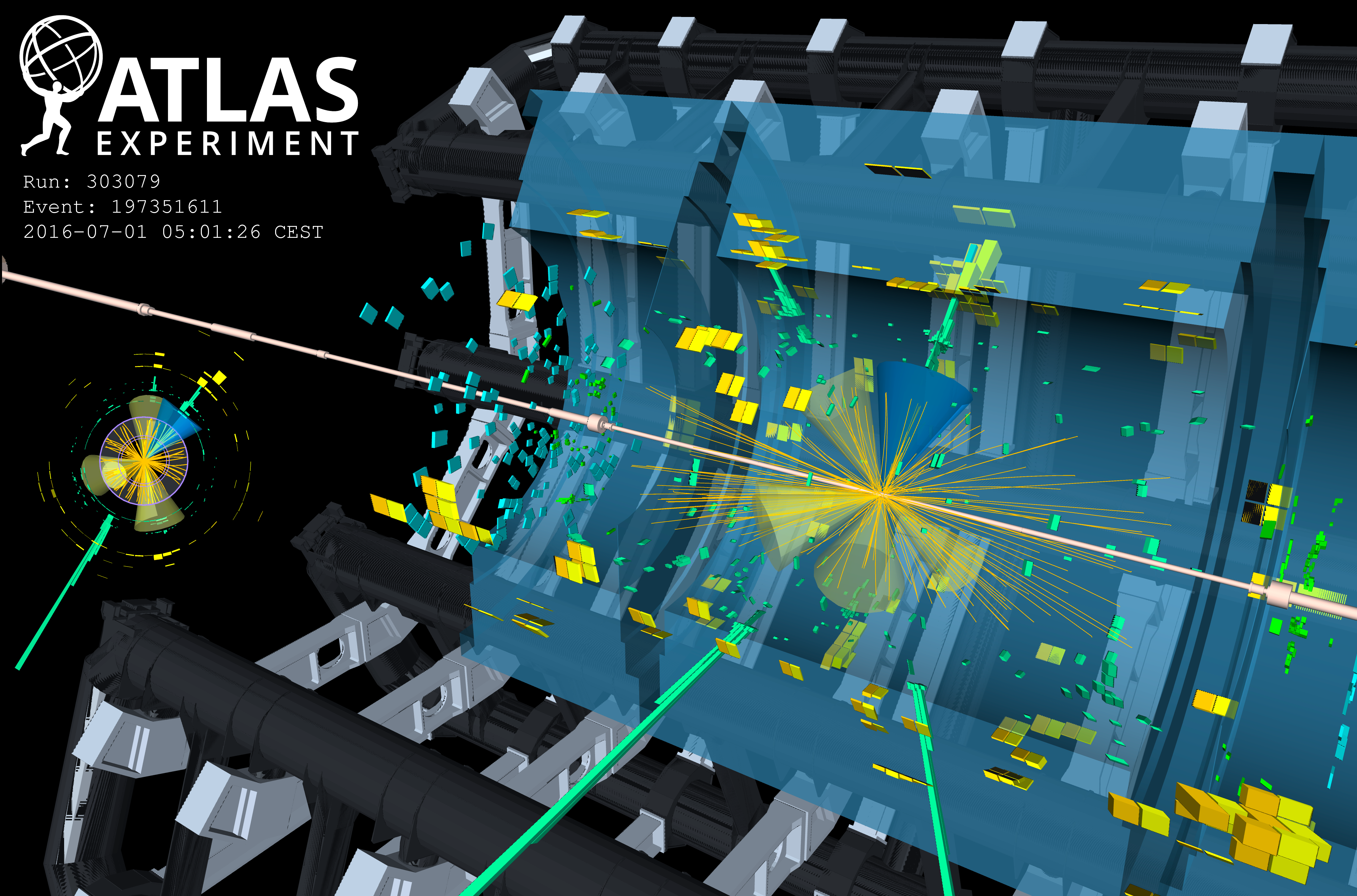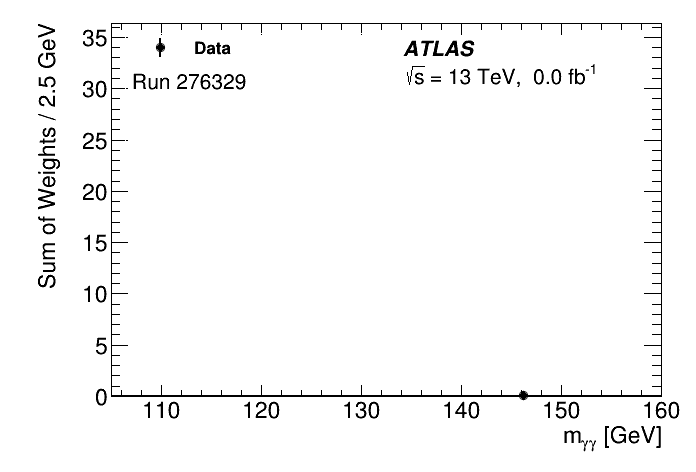ATLAS observes direct interaction of Higgs boson with top quark
4 June 2018 | By

CERN and Bologna, Italy, 4 June 2018. The ATLAS Collaboration at CERN has announced the observation of Higgs bosons produced together with a top-quark pair. Observing this extremely rare process is a significant milestone for the field of High-Energy Physics. It allows physicists to test critical parameters of the Higgs mechanism in the Standard Model of particle physics.
The result exploits the full dataset delivered to ATLAS by the Large Hadron Collider (LHC) and establishes the signal with a statistical significance of 6.3 standard deviations. It concurs with a recent observation by the CMS Collaboration with a significance of 5.2 standard deviations using a smaller dataset. “This measurement constitutes a landmark achievement in the exploration of the Higgs mechanism and the interaction of Standard Model particles with the Higgs boson,” says Karl Jakobs, ATLAS Spokesperson. “It provides direct evidence that the heaviest known particle, the top quark, interacts with the predicted large strength with the Higgs boson.” The signal for this production has slowly built up over years of accumulating data, with first evidence reported by ATLAS last December.
As only 1% of all Higgs bosons are produced in association with top quarks, its observation was extremely challenging. ATLAS physicists examined five years of collision data to arrive at this result. “This was one of the most demanding searches ever carried out by the ATLAS Collaboration, requiring a concerted effort from several analysis teams,” says Fabio Cerutti, ATLAS Higgs working group convenor. “As it is such a rare process, we had to look across many different Higgs boson decay channels. Some of these were limited by experimental uncertainties, while others by the quantity of the data we collected. It was only by combining all of these different analyses that we could achieve this observation.”
The result exploits the full dataset delivered to ATLAS by the Large Hadron Collider and establishes the signal with a statistical significance of 6.3 standard deviations.

The new result may also provide insight into one of the most puzzling aspects of the Standard Model: the wide range of masses among fermions, the class of particles that constitute matter and include quarks and leptons. Understanding the nature of the top quark mass would go a long way to solving this open question. “The measurement gives a strong indication that the Higgs boson has a key role in the large value of the top quark mass,” says Cerutti. “While this is certainly a key feature of the Standard Model, this is the first time it has been verified experimentally with overwhelming significance.”
The success of this result hints at the new analysis possibilities of the ATLAS experiment. Thanks to the wealth of data being produced by the LHC and the excellent performance of the ATLAS experiment, physicists will be able to study the Higgs boson in further rare and experimentally challenging interactions for the first time. Such studies will continue to challenge the limits of the Standard Model and may open new avenues of discovery.
“The full power of the entire dataset collected during Run 2, including those taken until the end of this year, will be used in the future to improve the precision of this result and to look for smaller deviations with reduced experimental uncertainties,” concludes Jakobs. “A combination of all Higgs boson measurements at the end of Run 2 will be important and exciting.”
Find out more
- The Higgs boson reveals its affinity for the top quark, CERN Press Release
- Observation of Higgs boson production in association with a top quark pair at the LHC with the ATLAS detector (arXiv: 1806.00425, see figures)
- New ATLAS result establishes production of Higgs boson in association with top quarks, ATLAS Physics Briefing
- Status and highlights from the ATLAS experiment, LHCP18 presentation by Kunihiro Nagano
- CMS Collaboration: Observation of ttH production (Phys. Rev. Lett. 120, 231801, arXiv:1804.02610)
- Beyond discovery: ATLAS explores the Higgs boson, ATLAS News, 11 April 2018



